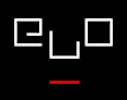Your cart is currently empty!
Showcase
-
riverIsland
John Cayley’s work often employs a technique he calls “transliteral morphing.” This is a letter-by-letter morphing that transitions from one text to another, much as graphical morphing moves points in… Read more.
·
-
Lexia to Perplexia
Lexia to Perplexia brings together the modes of fiction, criticism, and parable within an elegantly-designed “nervous interface” that pushes web conventions of the mouseover and click to their limits. It… Read more.
·
-
Photopia
Photopia is described in Baf’s Guide as “Sweet and sad, and complex enough that you may need to go through it twice in order to fully understand how all the… Read more.
·
-
Itinerant
Itinerant is a site-specific sound installation in Boston, Massachusetts. It invites people to take a walk through Boston Common and surrounding neighborhoods to experience an interactive sound work delivered via… Read more.
·
-
Blue Company
Blue Company is an email novel that was performed in 2001 and 2002, with the current news affecting how messages were sent. A “new economy” worker who is sent back… Read more.
·
-
The Ballad of Sand and Harry Soot
In its print edition, “The Ballad of Sand and Harry Soot” won Boston Review’s Second Annual Poetry Contest; the online edition won About.com’s Best of the Net Poetry Award. The… Read more.
·
-
‘I Know a Man,’ One Letter at a Time
“‘I Know a Man,’ One Letter at a Time” is a tribute to Robert Creeley (1926-2005). It places his poem in an austere, yet funny, “letterist” framework. This non-interactive piece… Read more.
·
-
Reagan Library
“Reagan Library” was published on the 1999 Gravitational Intrigue CD and is also available online. The piece presents four shifting worlds of text and 3D images, treating the theme of… Read more.
·
